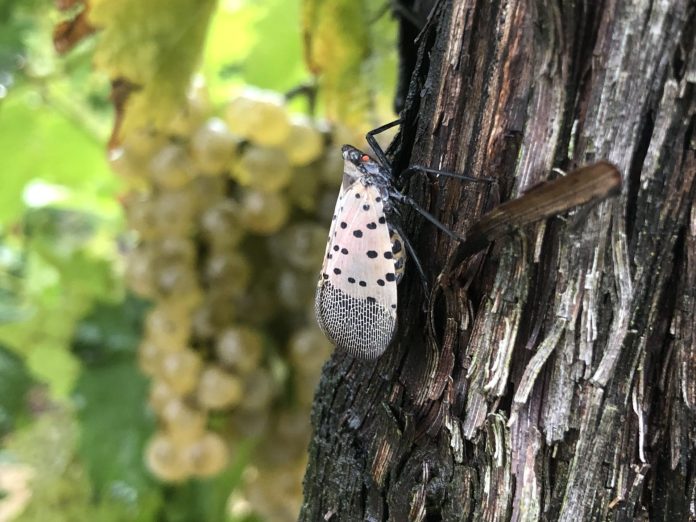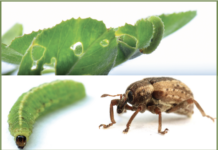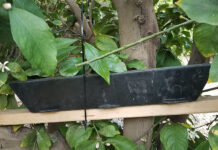In 2014, Pennsylvania reported the occurrence of a large planthopper, the spotted lanternfly (SLF), in Berks County. SLF (Lycorma delicatula) is a hemipteran insect of the family Fulgoridae and is thought to have arrived in the US on a shipment of stones in 2012. Ever since it was found in Pennsylvania, it rapidly spread to many states with infestations currently present in Delaware, Maryland, New Jersey, Pennsylvania, Virginia, and West Virginia. SLF has also been found, without established populations, in Connecticut, Massachusetts, New York, and North Carolina as of March 2020. SLF is native to China and has a wide host range including fruit trees such as apple, apricot, cherry, and peach; ornamental or woody trees such as birch, black walnut, dogwood, lilac, maple, pine, poplar, and tree of heaven; and grapes. The tree of heaven, which is also an invasive species in the United States, is a favorite host of SLF.
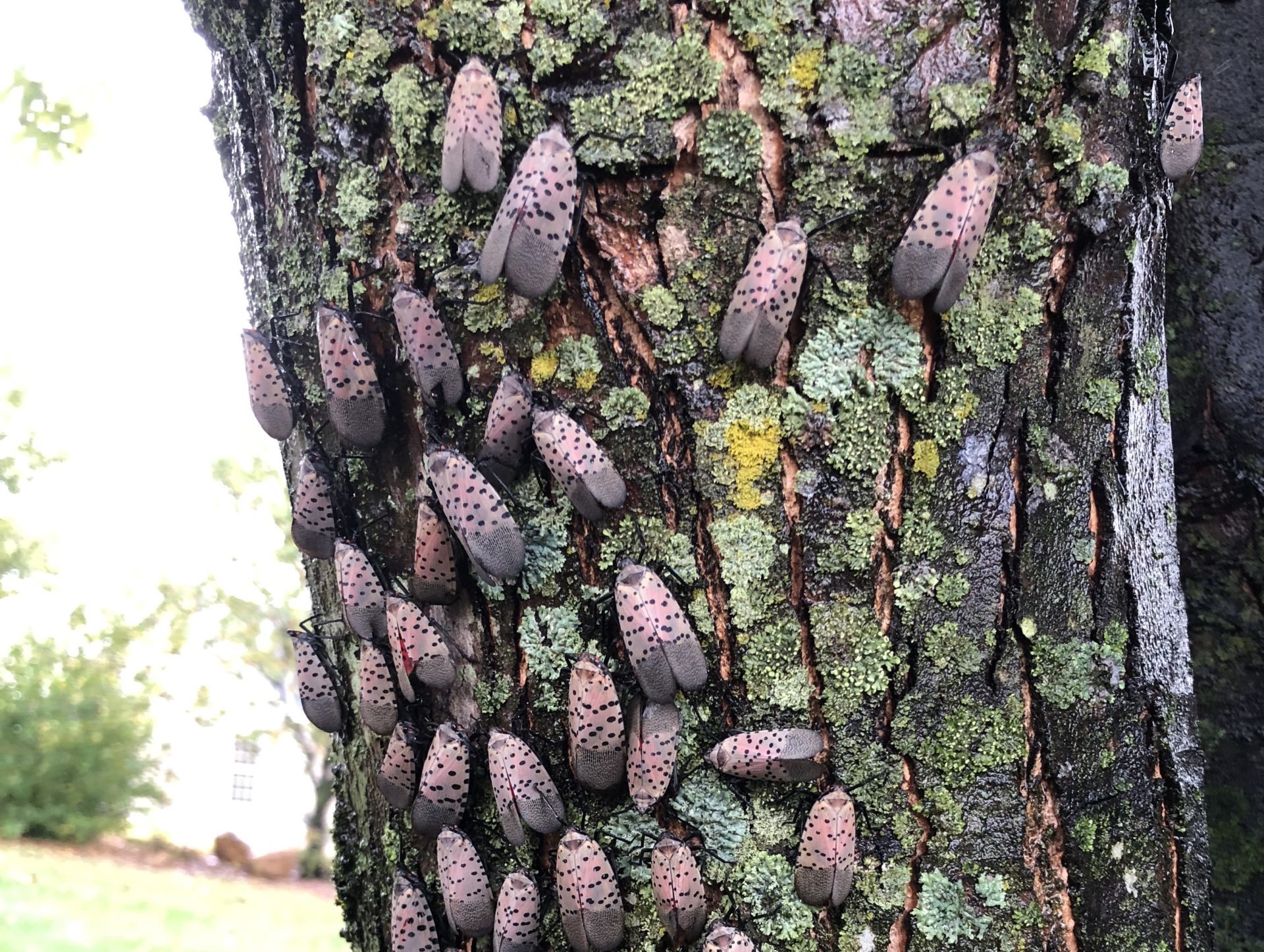
Considering the history of the spread of invasive pests from other areas to California, the presence of tree of heaven throughout California, and the importance of the grape industry and others susceptible hosts to the California economy, it is important to be aware of this pest and strategies to mitigate its potential negative impact.
Biology
SLF adults are about 1” with tan-colored forewings that have black spots and markings and hind wings having red, black, and white coloration and black spots. The abdomen is yellow with dark bands. Females deposit eggs in batches of 30 to 50 and cover them with a yellowish-brown waxy protective deposit. Eggs are the overwintering stage of SLF. Nymphs emerge in spring and go through four instars. First to third instar nymphs are black with white markings and the fourth instar is red with black and white markings.
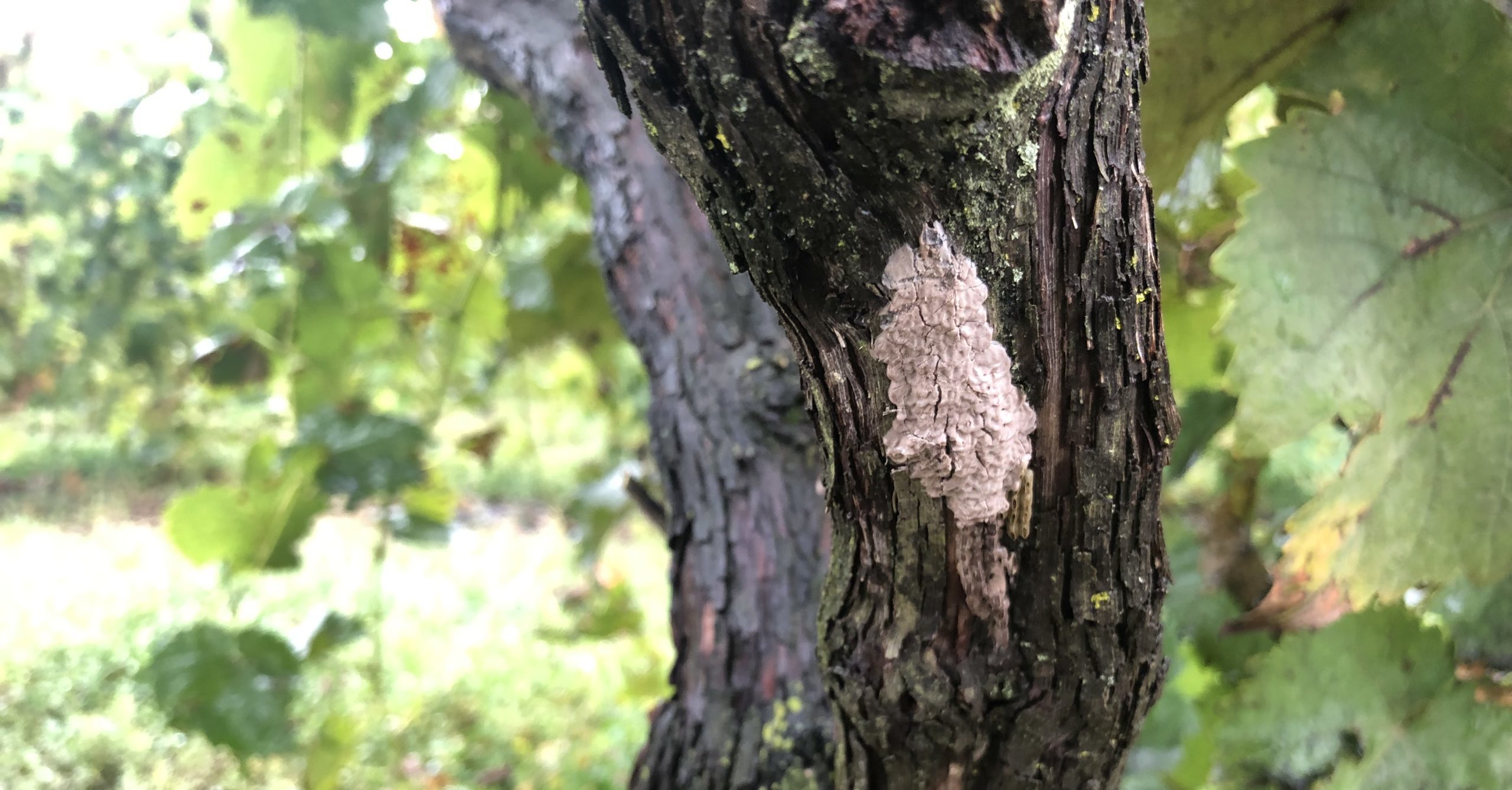
Damage
SLF can occur in large numbers and suck plant sap with their needle-like mouthparts, reduce the plant vigor, and can cause mortality in severe cases. Copious amounts of honeydew secreted by SLF promotes the development of sooty mold, which affects photosynthesis when on foliage or quality when on fruits. Since SLF infests several landscape trees and populations build in large numbers, it can also be a nuisance in urban and landscape areas.
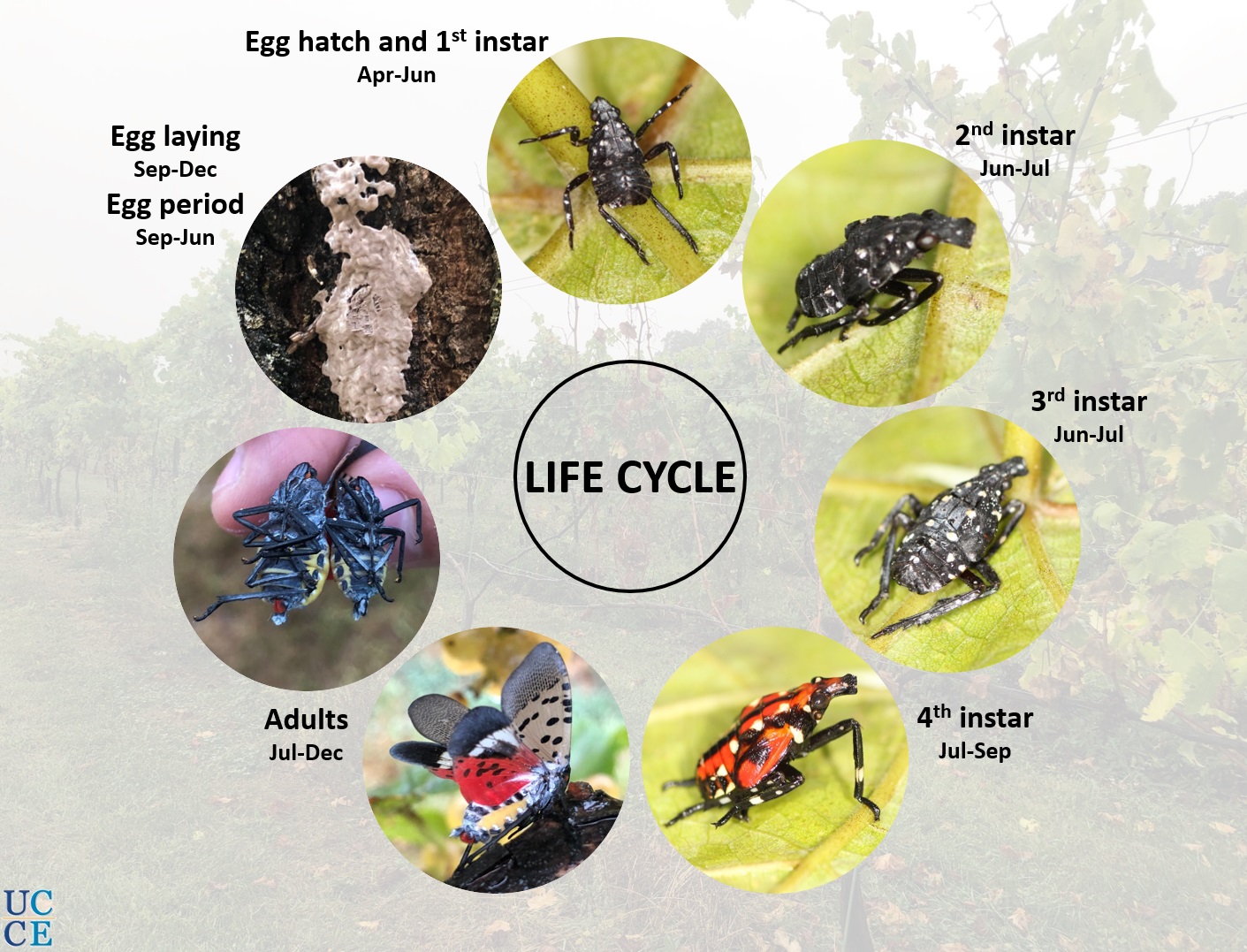
Spread
SLF can fly and spread to long distances through wind currents. They typically land on large trees and then distribute to other hosts. Their ability to deposit eggs on non-living surfaces like rocks, vehicles, and packages increases the risk of their accidental spread through materials shipped or vehicles moving from the infested areas. A recent modeling study identified California as a region highly suitable for the establishment of SLF.
Control
Scientists on the east coast and in California are currently working on biocontrol agents such as parasitic wasps (referred to as parasitoids) that attack SLF eggs and nymphs. If these parasitoids are specific to SLF and do not pose a risk to native insect populations or beneficial insects, they can be reared and mass-released for areawide control of the pest. There are certain chemical pesticides and biological pesticides based on entomopathogenic fungi such as Beauveria bassiana can be used to treat SLF infestations. However, the best strategy is to reduce the risk of its introduction and spread.

As the SLF not only infests agriculturally important hosts, but also infests hosts in urban and landscape areas, both the agricultural community and the general public should be vigilant and join hands to prevent its invasion and spread in California. When there is an areawide problem, collective actions have a major impact on addressing them. A few important points to note are:
- Be aware of the pest and able to identify the eggs, nymphs, and adults. This link to a video provides an overview of the pest, its biology, damage, and control: https://www.youtube.com/watch?v=45103-PFI4M.
- Check vehicles and packages arriving from the infested regions in the United States for egg masses.
- If found, immediately report to the local Agricultural Commissioner, University of California Cooperative Extension, or California Department of Food and Agriculture office.
Useful Resources
https://academic.oup.com/jipm/article/6/1/20/2936989
https://ucanr.edu/blogs/blogcore/postdetail.cfm?postnum=15861
https://ucanr.edu/blogs/blogcore/postdetail.cfm?postnum=26349











